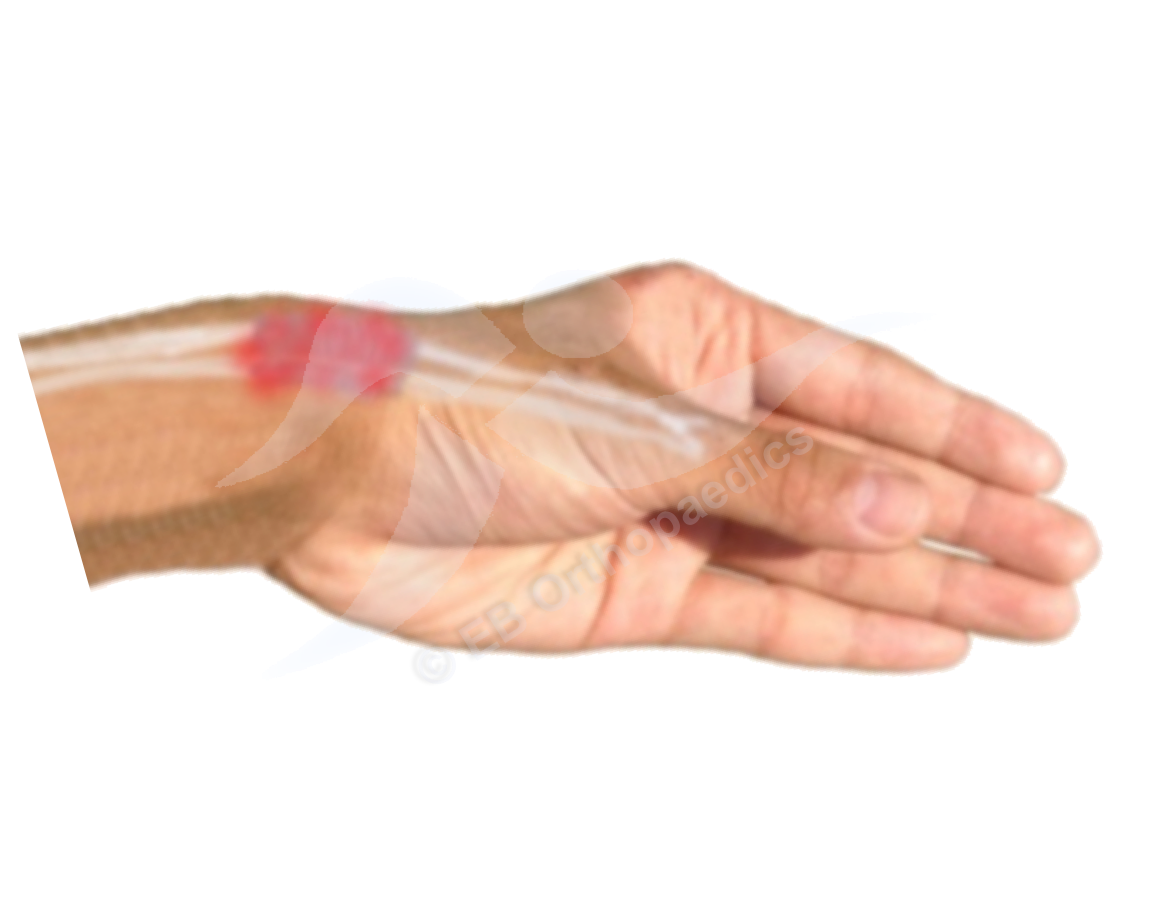DeQuervains tenosynovitis

DeQuervains tenosynovitis is inflammation of the covering of two tendons at the wrist. These are the abductor pollicis longus and the extensor pollicis brevis. These tendons act to move the thumb.
It is usually the repetitive action of the thumb which leads to inflammation and to DeQuervains tenosynovitis, however arthritis affecting this area can also lead to inflammation through irritation of the tendons from the underlying abnormal bone.
Pain is the main symptom, which may start as a mild ache around the base of the thumb and progress up the forearm. There may be associated swelling and crepitus (crunching or squeaking) as the tendons move within the restrictive inflamed tissue.
Often resting the hand and avoiding the activities which caused the problem to begin with are sufficient. A splint may also be helpful, together with painkillers. A steroid injection can help and may be given if there is uncertainty as to how much of the symptoms are coming from the area around the tendons and how much from elsewhere.
In some cases that continue despite non-surgical treatment, surgery may be advised. The surgery is performed through a cut near the wrist. The tight inflamed tunnel, which the tendons run through, is released to allow them to move more freely.
You will be advised of exercises to prevent the hand and wrist from getting stiff. The physiotherapists will also be able to advise on alternative ways of carrying out activities to avoid excessive strain on the tendons as they recover.
Modifying your activities and wearing a splint is often sufficient for most people in the early stages of DeQuervains. When non-surgical treatments have failed, surgery usually provides a reliable improvement in pain and function.